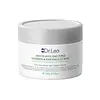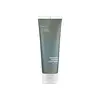What's inside
What's inside
 Key Ingredients
Key Ingredients

 Benefits
Benefits

 Concerns
Concerns

 Ingredients Side-by-side
Ingredients Side-by-side

Water
Skin ConditioningKaolin
AbrasiveGlycerin
HumectantParaffinum Liquidum
EmollientCaprylic/Capric Triglyceride
MaskingCetearyl Alcohol
EmollientDipropylene Glycol
HumectantIsohexadecane
EmollientSteareth-21
CleansingSilt
AbsorbentSalicylic Acid
MaskingAvena Sativa Kernel Flour
AbrasiveDipotassium Glycyrrhizate
HumectantLactobionic Acid
BufferingAllantoin
Skin ConditioningHamamelis Virginiana Water
AstringentTartaric Acid
BufferingSodium Hyaluronate
Humectant1,2-Hexanediol
Skin ConditioningHydroxyacetophenone
AntioxidantOlea Europaea Fruit Oil
MaskingAvena Sativa Kernel Oil
Skin ConditioningCeramide NP
Skin ConditioningMyrothamnus Flabellifolia Leaf Extract
EmollientPrunus Serotina Fruit Extract
MaskingChaenomeles Sinensis Fruit Extract
AntioxidantDiospyros Kaki Fruit Extract
Skin ConditioningCitrus Grandis Fruit Extract
AstringentBellis Perennis Flower Extract
Skin ConditioningJasminum Officinale Flower Extract
MaskingRosa Centifolia Flower Extract
AstringentSodium Lactate
BufferingGlycolic Acid
BufferingLeontopodium Alpinum Flower/Leaf Extract
Skin ConditioningButylene Glycol
HumectantSodium Stearoyl Glutamate
CleansingCeteareth-20
CleansingXanthan Gum
EmulsifyingPotassium Cetyl Phosphate
EmulsifyingDisodium EDTA
Alumina
AbrasivePhenoxyethanol
PreservativeHydroxypropyl Cyclodextrin
MaskingPropanediol
SolventCaprylyl Glycol
EmollientPentylene Glycol
Skin Conditioning10-Hydroxydecanoic Acid
Skin ConditioningOctyldodecanol
EmollientSucrose
HumectantUrea
BufferingSodium Citrate
BufferingHydrogenated Lecithin
EmulsifyingLevulinic Acid
PerfumingCholesterol
EmollientGlyceryl Caprylate
EmollientCitric Acid
BufferingMalic Acid
BufferingSodium Benzoate
MaskingPotassium Sorbate
PreservativeCI 77891
Cosmetic ColorantWater, Kaolin, Glycerin, Paraffinum Liquidum, Caprylic/Capric Triglyceride, Cetearyl Alcohol, Dipropylene Glycol, Isohexadecane, Steareth-21, Silt, Salicylic Acid, Avena Sativa Kernel Flour, Dipotassium Glycyrrhizate, Lactobionic Acid, Allantoin, Hamamelis Virginiana Water, Tartaric Acid, Sodium Hyaluronate, 1,2-Hexanediol, Hydroxyacetophenone, Olea Europaea Fruit Oil, Avena Sativa Kernel Oil, Ceramide NP, Myrothamnus Flabellifolia Leaf Extract, Prunus Serotina Fruit Extract, Chaenomeles Sinensis Fruit Extract, Diospyros Kaki Fruit Extract, Citrus Grandis Fruit Extract, Bellis Perennis Flower Extract, Jasminum Officinale Flower Extract, Rosa Centifolia Flower Extract, Sodium Lactate, Glycolic Acid, Leontopodium Alpinum Flower/Leaf Extract, Butylene Glycol, Sodium Stearoyl Glutamate, Ceteareth-20, Xanthan Gum, Potassium Cetyl Phosphate, Disodium EDTA, Alumina, Phenoxyethanol, Hydroxypropyl Cyclodextrin, Propanediol, Caprylyl Glycol, Pentylene Glycol, 10-Hydroxydecanoic Acid, Octyldodecanol, Sucrose, Urea, Sodium Citrate, Hydrogenated Lecithin, Levulinic Acid, Cholesterol, Glyceryl Caprylate, Citric Acid, Malic Acid, Sodium Benzoate, Potassium Sorbate, CI 77891
Water
Skin ConditioningKaolin
AbrasiveGlycerin
HumectantDipropylene Glycol
HumectantBentonite
AbsorbentArtemisia Princeps Extract
Skin ConditioningStearic Acid
CleansingPanthenol
Skin Conditioning1,2-Hexanediol
Skin ConditioningIllite
AbrasiveArtemisia Montana Leaf Powder
ExfoliatingCamellia Sinensis Leaf Water
MaskingCastanea Crenata Shell Extract
Skin ConditioningOriganum Vulgare Leaf Extract
Skin ConditioningChamaecyparis Obtusa Leaf Extract
Skin ConditioningSalix Alba Bark Extract
AstringentAvena Sativa Kernel Extract
AbrasiveCynara Scolymus Leaf Extract
Skin ConditioningLactobacillus/Soybean Ferment Extract
Skin ConditioningPortulaca Oleracea Extract
Skin ConditioningCinnamomum Cassia Bark Extract
MaskingScutellaria Baicalensis Root Extract
AstringentMontmorillonite
AbsorbentCalcite
Skin ConditioningPhaseolus Angularis Seed Powder
Canadian Colloidal Clay
Skin ConditioningHydrogenated Lecithin
EmulsifyingBeta-Glucan
Skin ConditioningMethylpropanediol
SolventAlgin
MaskingMagnesium Aluminum Silicate
AbsorbentCetyl Alcohol
EmollientButylene Glycol
HumectantXanthan Gum
EmulsifyingAllantoin
Skin ConditioningTromethamine
BufferingPolyquaternium-51
Skin ConditioningEthylhexylglycerin
Skin ConditioningWater, Kaolin, Glycerin, Dipropylene Glycol, Bentonite, Artemisia Princeps Extract, Stearic Acid, Panthenol, 1,2-Hexanediol, Illite, Artemisia Montana Leaf Powder, Camellia Sinensis Leaf Water, Castanea Crenata Shell Extract, Origanum Vulgare Leaf Extract, Chamaecyparis Obtusa Leaf Extract, Salix Alba Bark Extract, Avena Sativa Kernel Extract, Cynara Scolymus Leaf Extract, Lactobacillus/Soybean Ferment Extract, Portulaca Oleracea Extract, Cinnamomum Cassia Bark Extract, Scutellaria Baicalensis Root Extract, Montmorillonite, Calcite, Phaseolus Angularis Seed Powder, Canadian Colloidal Clay, Hydrogenated Lecithin, Beta-Glucan, Methylpropanediol, Algin, Magnesium Aluminum Silicate, Cetyl Alcohol, Butylene Glycol, Xanthan Gum, Allantoin, Tromethamine, Polyquaternium-51, Ethylhexylglycerin
 Reviews
Reviews

Ingredients Explained
These ingredients are found in both products.
Ingredients higher up in an ingredient list are typically present in a larger amount.
1,2-Hexanediol is a synthetic liquid and another multi-functional powerhouse.
It is a:
- Humectant, drawing moisture into the skin
- Emollient, helping to soften skin
- Solvent, dispersing and stabilizing formulas
- Preservative booster, enhancing the antimicrobial activity of other preservatives
Allantoin is a soothing ingredient known for its protective and moisturizingg properties. Because of this, it is often added to products with strong active ingredients.
Studies show higher concentrations of this ingredient can promote wound healing.
Though it can be derived from the comfrey plant, allantoin is produced synthetically for cosmetic products to ensure purity.
Learn more about AllantoinButylene Glycol (or BG) is used within cosmetic products for a few different reasons:
Overall, Butylene Glycol is a safe and well-rounded ingredient that works well with other ingredients.
Though this ingredient works well with most skin types, some people with sensitive skin may experience a reaction such as allergic rashes, closed comedones, or itchiness.
Learn more about Butylene GlycolDipropylene Glycol is a synthetically created humectant, stabilizer, and solvent.
This ingredient helps:
Dipropylene glycol is technically an alcohol, but it belongs to the glycol family (often considered part of the ‘good’ alcohols). This means it is hydrating and gentle on skin unlike drying solvent alcohols like denatured alcohol.
As a masking agent, Dipropylene Glycol can be used to cover the smell of other ingredients. However, it does not have a scent.
Studies show Dipropylene Glycol is considered safe to use in skincare.
Learn more about Dipropylene GlycolGlycerin is already naturally found in your skin. It helps moisturize and protect your skin.
A study from 2016 found glycerin to be more effective as a humectant than AHAs and hyaluronic acid.
As a humectant, it helps the skin stay hydrated by pulling moisture to your skin. The low molecular weight of glycerin allows it to pull moisture into the deeper layers of your skin.
Hydrated skin improves your skin barrier; Your skin barrier helps protect against irritants and bacteria.
Glycerin has also been found to have antimicrobial and antiviral properties. Due to these properties, glycerin is often used in wound and burn treatments.
In cosmetics, glycerin is usually derived from plants such as soybean or palm. However, it can also be sourced from animals, such as tallow or animal fat.
This ingredient is organic, colorless, odorless, and non-toxic.
Glycerin is the name for this ingredient in American English. British English uses Glycerol/Glycerine.
Learn more about GlycerinHydrogenated Lecithin is created from the hydrogenation of lecithin (a group of phospholipids). Hydrogenation is a chemical reaction between hydrogen and another element.
This ingredient is an emollient and emulsifier. As an emollient, it helps soften skin by trapping moisture within. As an emulsifier, it prevents oil and water ingredients from separating.
Kaolin is a clay. It is used for oil control and to help minimize pores. Like other clays, kaolin has the ability to absorb excess sebum or oil. This can help clean out pores and mattify the skin.
Some types of kaolin may have exfoliating properties. When water is added to kaolin, it becomes a paste with small abrasive particles.
Most kaolin is a white color, but may be pink/orange/red depending on where it comes from.
The name 'kaolin' comes from a Chinese village named 'Gaoling'. Kaolin clay comes from rocks rich in kaolinite. Kaolinite, the mineral, has a silicate layered structure. Kaolinite is formed from chemical weathering of aluminum siilicate minerals.
Besides skincare, kaolin is commonly used to make glossy paper, in ceramics, toothpaste, and as medicine to soothe stomach issues.
Learn more about KaolinWater. It's the most common cosmetic ingredient of all. You'll usually see it at the top of ingredient lists, meaning that it makes up the largest part of the product.
So why is it so popular? Water most often acts as a solvent - this means that it helps dissolve other ingredients into the formulation.
You'll also recognize water as that liquid we all need to stay alive. If you see this, drink a glass of water. Stay hydrated!
Learn more about WaterXanthan gum is used as a stabilizer and thickener within cosmetic products. It helps give products a sticky, thick feeling - preventing them from being too runny.
On the technical side of things, xanthan gum is a polysaccharide - a combination consisting of multiple sugar molecules bonded together.
Xanthan gum is a pretty common and great ingredient. It is a natural, non-toxic, non-irritating ingredient that is also commonly used in food products.
Learn more about Xanthan Gum